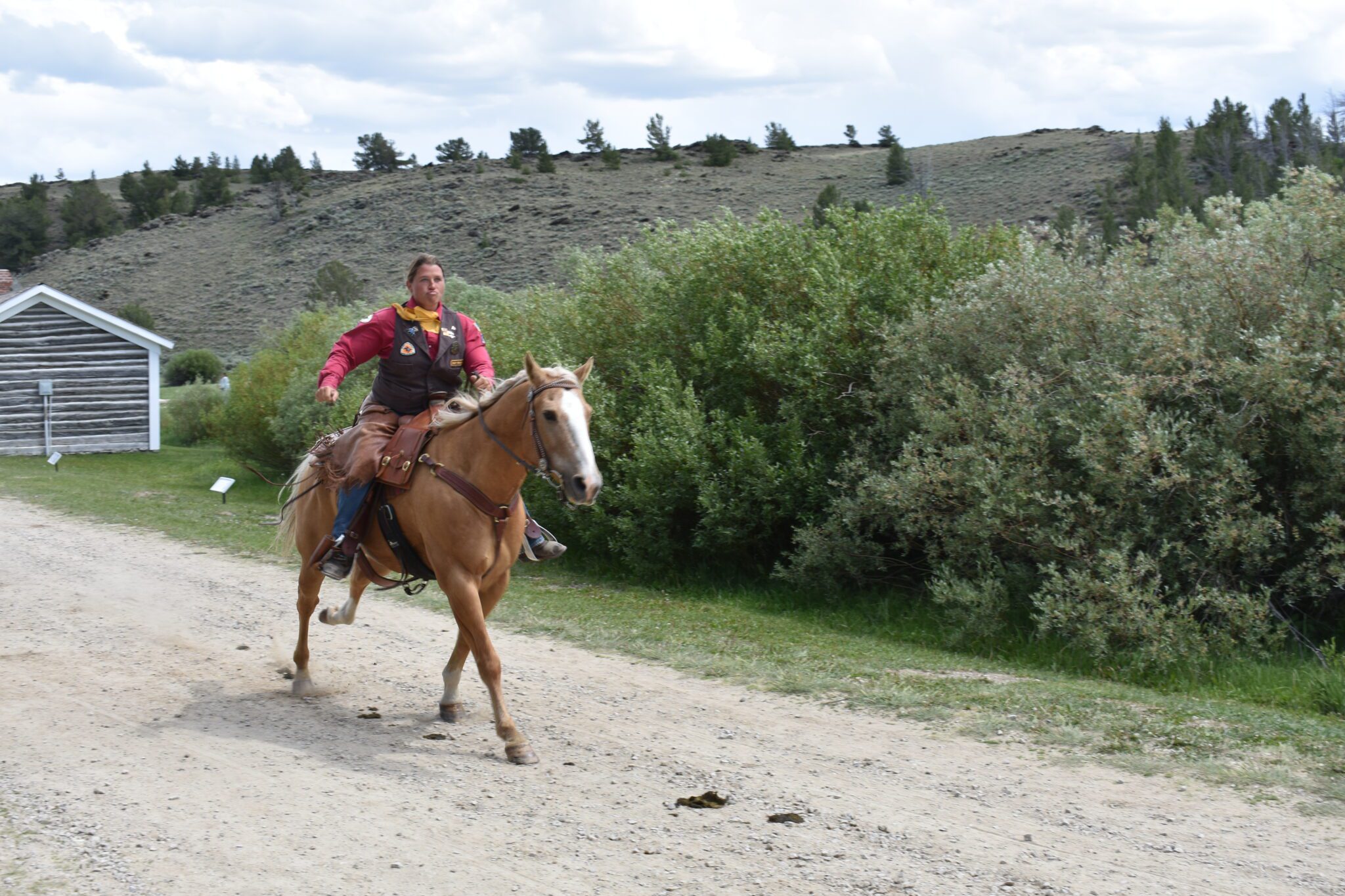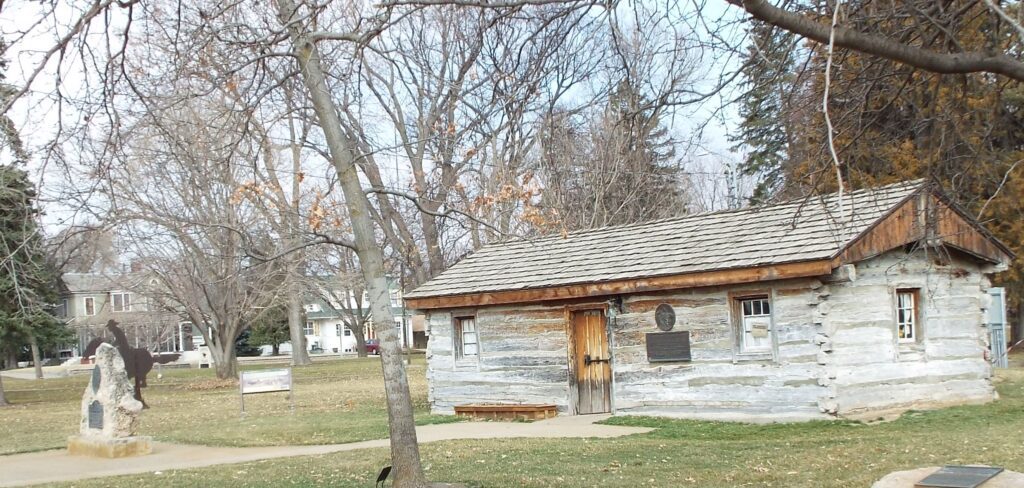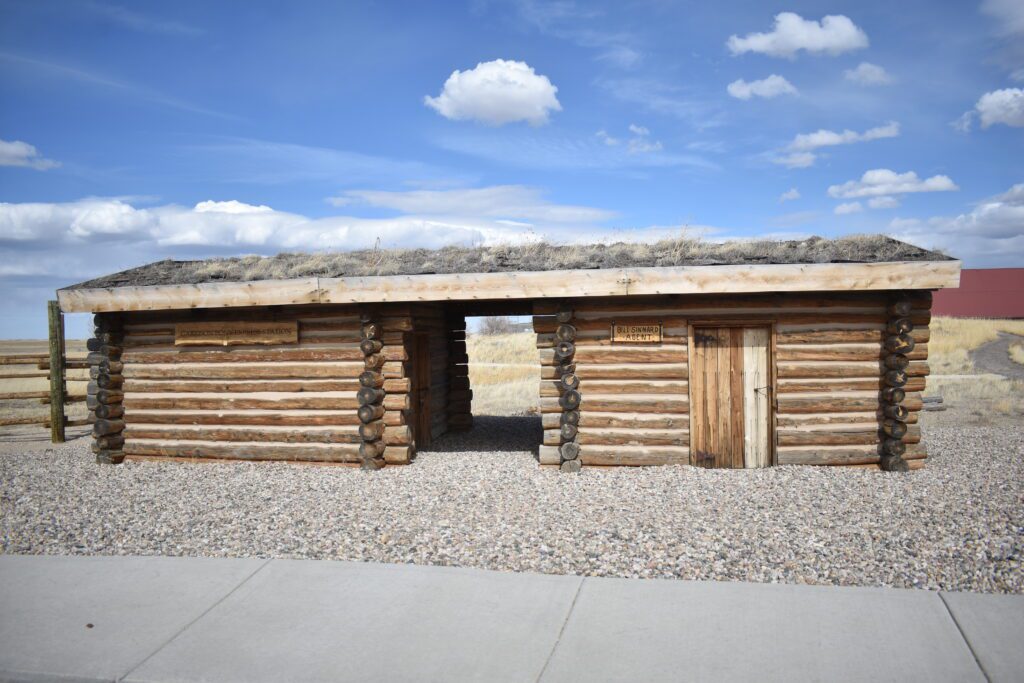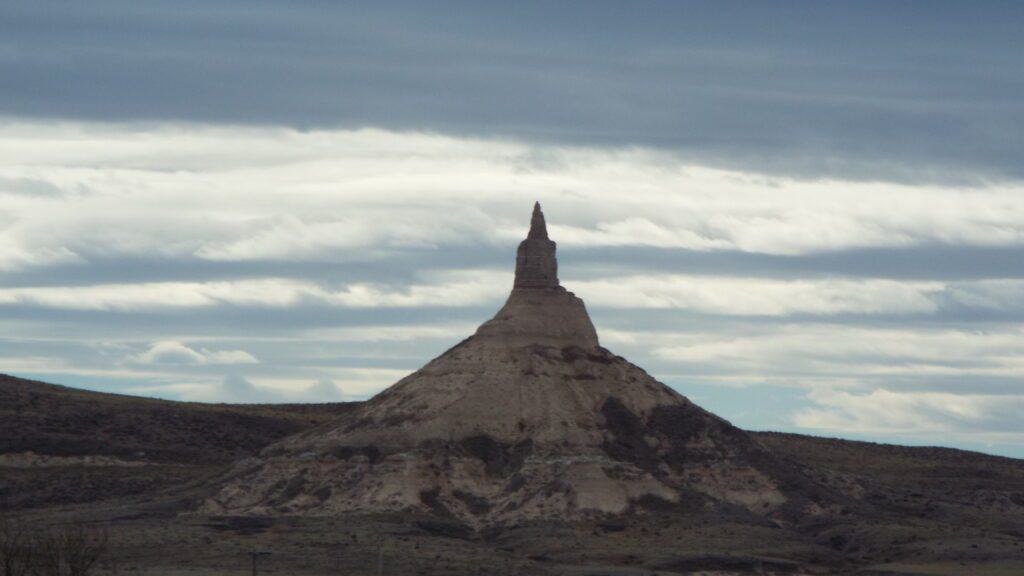News
History: Pony Express Part 2

The Pony Express was in operation for only 18 months, but it has captured our imagination for over 100 years. Daring young riders and fleet horses galloping full speed across the plains, braving dangerous weather, hostile Indians and road agents to get the U.S. Mail through.
In this part two of the Pony Express, we will look at some the rides and riders, and a little about the relay stations along the route.
Sheridan Post, Sunday, September 10,1922 – (This is part of a longer article)
While buying horses for the express, Russell did not neglect the careful selection of experienced stage men for the enterprise or the employing of suitable men for riders. Among the capable transportation men whom he employed, all of whom were familiar with the western routes west of the Missouri were Ben Ficklin, Jim Bromley, John Scudder and afterwards notorious Jack Slade, who was hanged by the Vigilantes at Virginia City, Montana, four years later. All of these were frontiersmen of nerve and durable, the combined weight of their services that Russell was able to launch his great enterprise, which preceded the daily four-horse stagecoach, opened the way for the telegraph and, finally, for the railroad across the continent to the Golden Gate.

Start of First Expert Rider Celebrated in a Fitting Manner – Most of the animals bought for the pony express were distributed along the route at intervals of nine to fifteen miles, according to the nature of the country. Each rider was supposed to ride three animals’ succession traversing three “stages,” and to go at least thirty-three miles. The riders were young and hardy and were selected for their light weight. None weighed more than 135 pounds.
The saddle, bridle and leather pouch used for carrying the mail were light and energy, and it was largely due to the three being only13 pounds.
St. Joseph was chosen as the point of departure for the Pony Express, and the start proper was made from the Patee House, a famous old hostelry. The signal for starting was the firing of a cannon and while the sound was echoing through the town the rider was speeding up the street on his way to the office of the company.
Catching the pouch of mail, the rider, Johnny Frey, rode onto the ferry, and as the boat touched land on the other side the first messenger, dashed off toward the setting sun. Thus was initiated an enterprise that did much to hurry forward the spanning of the continent by telegraph wire and iron rail. The new schedule of mail delivery beat all previous records across the plains to California by nearly two weeks.
Frye’s horse was jet black, and at the same hour he left St. Joseph and another rider, Harry Hoff, left Sacramento on the first stage eastward. While the event was celebrated with much enthusiasm at St. Joseph, the celebration at Sacramento was on a much more elaborate scale. The merchants subscribed a liberal amount 8 and the streets were gaily decorated with flags and banners. Thousands of people came in from the gold fields and business was suspended for the day. From surrounding hills cannons boomed during the afternoon, bands played on the city streets and the orators made speeches, it was the proudest day in the history of the Pacific coast I for that decade.
Hoff dashed out of town and made the first 20 miles — two stages- in 59 minutes. He changed horses in 10 seconds, and completed his run ton Placerville, a distance of 55 miles in two hours and 49 minutes.
At Placerville Hoff threw his pouch to the second rider, Boston, who was off like a shot on his 72-mile stretch. He climbed the western slope of the Sierras and pushed on across the range to Fort Churchill. Fort Churchill.
The first express reached Salt Lake from Sacrament four days later, on April 7, while the first mail from St. Joseph arrived April 9th, two days later. There was great rejoicing there, for the citizens of Salt Lake had, up to this time, been accustomed to receiving news from six weeks to three months old.

The most thrilling bit of intelligence transmitted by “pony” during the early days of the express was that war was imminent. Soon after news of the declaration of war came and the troops in Utah were ordered to the national capital. The first tidings of the firing on Fort Sumter reached Sacramento in eight days, 11 hours. Prop that time California businessmen and public officials subscribed to a bonus fund to be paid to riders for carrying war news as fast as possible. The riders along the route were given $300 for carrying a bundle of Chicago papers containing news of the battle of Antietam to Sacramento a day faster than usual.
The fastest trip made by the express riders was in March 1861, when Lincoln’s first inaugural address was carried through from St. Joseph to Sacramento, a distance of 1,980; miles, in seven days and 17 hours.
Horses Kept at a Gallop to Maintain Schedule – In making their schedule, it was necessary, where the stations were not too far apart, for riders to keep their horses on a dead run continuously in order to get through on schedule time. Not to exceed two minutes was allowed for changing mounts. The route westward from St. Joseph lay south of west until it struck the old overland military road at Kennekuk, 44 miles out. Thence it diverged northwesterly across the Kickapoo, Indian reservation via Granada, Log Cabin, Seneca, Ash Point, Giuittard’s, Marysville and Hollenberg; on over rolling prairies to the Platte River and due west to Fort Kearney. Often the rider passed close to droves of deer and antelope and vast herds of buffalo.
Of the 80 riders employed on the line, at time 40 were in the saddle going west and 40 riding east. Each day every rider covered an average distance of 40 miles. The weight of the mail carried was limited to 20 pounds.
At first $5 per half-ounce was charged for carrying letters, but shortly after the express went into operation the government ordered the . Rates reduced to $1 per half-ounce, which continued until the telegraph was completed and the express went out of business.

The riders often had to grapple with sudden and unforeseen dangers, such as snow slides in the mountain passes, roaring torrents, terrific windstorms and blinding rain, but it was seldom that a stage was not completed on time. The schedule settled down to ten days for eight months of the year and 12 days for the other four months. The most serious interruption of the express came within two months of its establishment, when an outbreak of Piute, (Paiute) Shoshone and Bannock Indians resulted in the burning of several stations and the murder of several station keepers.
The riders had several desperate races for life, but most of them were able to out-distance Indians who attacked them because of the unusual fleetness of their horses. For risking their lives on the prairie and mountain trails, the riders received from $50 to $150 a month and board, the pay being graduated according to the nature of the ‘ country covered and the perils to be faced. William F. Cody, famous later as Buffalo Bill, and a few others, who rode through a dangerous country infested with Cheyennes and Comanches, were paid the larger figure.
(Although Buffalo Bills claim as a rider has been contested, this is what the old newspaper wrote. The article gives an idea of the dedication of the riders to make sure the mail went through) Buffalo Bill was the most famous of the riders in later years. His route embraced a ride of 75miles on the north fork of the Platte through a region infested both with road agents and hostile Indians. The route was a long and extremely dangerous one. Once, after his 75-mile ride, he found the next rider dead and scalped by Indians, and he continued on the trail for 85 miles farther on schedule time. Then he turned back and rode the entire distance again, making a continuous ride of 320 miles without rest at an average speed of 15 miles an hour. This was one of the most extraordinary rides in history. Another that was even more unusual, however, was made by Robert Haslam, known as Pony Bob, who covered 380 miles without resting when the station had been burned and another rider killed by the Indians.
Another of the Pony Express riders. Jack Keetley made a run of I54 miles in thirty-one hours: and another, Jim Moore, rode 280 miles in fourteen hours and forty-six minutes
Hudson Herald, Hudson Wyoming, June 8, 1923 – The Pony Express to be re-staged this fall, 63 years after Alex Carlyle (some papers said it was Johnny Frey) on a “nice brown mare” raced out of St. Joseph, Mo. headed west, and Harry Hoff on a “spirited half breed broncho” sprinted out of Sacramento, California headed east, the entire population of both cities i massed along the street and yelling their heads off and the whole country watching this spectacular race against time across the 1,966 miles of the “Great American Desert.”
Today the “Pony Express” is to be “re-staged” looks like a bad mixup of language, since it was a horseback mail service established on purpose to beat the stage. Just the same, the announcement is one to stir the blood of the West between the Mississippi and the Pacific. Nearly all of the Pony Ex press riders have hit the Long Trail, but the story of the “Winning of The West” without them would be like the “Wild West Show”with Buffalo Bill out.
The 1923 Pony Express riders will leave “Saint Jo” about August 20 and will finish at San Francisco September 9, the anniversary of the admission to the Union of California. There will also be a Mark Twain and Bret Harte celebration in the West this fall.
This year is the seventy-fifth anniversary of the discovery of gold at Sutter’s Mill. September 15, 1858, Butterfield’s “Overland Mail” was established. September 13, 1870, the first transcontinental railroad train left Omaha for San Francisco. So, there is likely to be a grand combination celebration, with an “evolution of transportation” exhibit, with covered wagon, stage, Pony Express, railroad train and airplane all in the picture, and cities along the “Central Route” taking part.

Today, the Pony Express trail has been added to the National Trails System as a Historic Trail, and each year in June the National Pony Express Association (NPEA) holds an annual re-ride along the historic route. The ride can be followed on their website, and the riders can be seen galloping along the trail.
Photos: Pony Express re-ride in South Pass City. Pony Express/Stage Stations at Gothenburg Neb, and Casper Historic Trails Center, Casper. Chimney Rock, Scottsbluff Nebraska, one of the landmarks used along the trails. (Vannoy photos)

